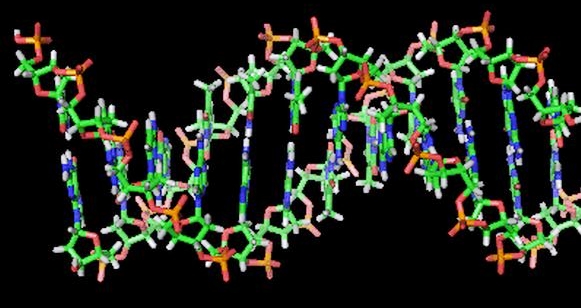Ingestible Origami Robot could be a Life Saver when Swallowed
| Arthur Dominic Villasanta | | May 13, 2016 05:57 AM EDT |
(Photo : MIT) The incredible ingestible origami robot
An international team of researchers has invented the incredible. It's an "ingestible origami robot" that, once swallowed, makes its way to a patient's stomach to heal a wound, remove a button battery or deliver medicine.
Researchers from MIT, the University of Sheffield, and the Tokyo Institute of Technology have developed and demonstrated a tiny origami robot that will unfold itself from a swallowed capsule and, steered by external magnetic fields, crawl across the stomach wall to perform a set task.
Like Us on Facebook
In a test that can be viewed here on YouTube, the origami robot made from dried pig intestine used in sausages unfolded and flattened itself once the ice capsule encasing it had thawed. Once unfurled, it proceeded to remove a button battery stuck to wall of a simulated stomach.
MIT said there are over 3,500 cases of people (mostly children) swallowing button batteries every year in the United States.
The new robot builds on a long sequence of papers on origami robots from the research group of Daniela Rus, the Andrew and Erna Viterbi Professor in MIT's Department of Electrical Engineering and Computer Science.
"It's really exciting to see our small origami robots doing something with potential important applications to health care," said Rus, who also directs MIT's Computer Science and Artificial Intelligence Laboratory (CSAIL).
"For applications inside the body, we need a small, controllable, untethered robot system. It's really difficult to control and place a robot inside the body if the robot is attached to a tether."
The robot propels itself inside the esophagus and stomach using what's called a "stick-slip" motion, in which its appendages stick to a surface through friction when it executes a move. The robot slips free again when its body flexes to change its weight distribution.
Researchers tested about a dozen different possibilities for the structural material before settling on the type of dried pig intestine used in sausage casings.
Joining Rus on the paper are first author Shuhei Miyashita, who was a postdoc at CSAIL when the work was done and is now a lecturer in electronics at the University of York, in England; Steven Guitron, a graduate student in mechanical engineering; Shuguang Li, a CSAIL postdoc; Kazuhiro Yoshida of Tokyo Institute of Technology, who was visiting MIT on sabbatical when the work was done; and Dana Damian of the University of Sheffield, in England
Tagsingestible origami robot, MIT, University of Sheffield, Tokyo Institute of Technology, Daniela Rus
©2015 Chinatopix All rights reserved. Do not reproduce without permission
EDITOR'S PICKS
-

Did the Trump administration just announce plans for a trade war with ‘hostile’ China and Russia?
-

US Senate passes Taiwan travel bill slammed by China
-

As Yan Sihong’s family grieves, here are other Chinese students who went missing abroad. Some have never been found
-

Beijing blasts Western critics who ‘smear China’ with the term sharp power
-

China Envoy Seeks to Defuse Tensions With U.S. as a Trade War Brews
-

Singapore's Deputy PM Provides Bitcoin Vote of Confidence Amid China's Blanket Bans
-

China warns investors over risks in overseas virtual currency trading
-

Chinese government most trustworthy: survey
-

Kashima Antlers On Course For Back-To-Back Titles
MOST POPULAR
LATEST NEWS
Zhou Yongkang: China's Former Security Chief Sentenced to Life in Prison

China's former Chief of the Ministry of Public Security, Zhou Yongkang, has been given a life sentence after he was found guilty of abusing his office, bribery and deliberately ... Full Article
TRENDING STORY

China Pork Prices Expected to Stabilize As The Supplies Recover

Elephone P9000 Smartphone is now on Sale on Amazon India

There's a Big Chance Cliffhangers Won't Still Be Resolved When Grey's Anatomy Season 13 Returns

Supreme Court Ruled on Samsung vs Apple Dispute for Patent Infringement

Microsoft Surface Pro 5 Rumors and Release Date: What is the Latest?













